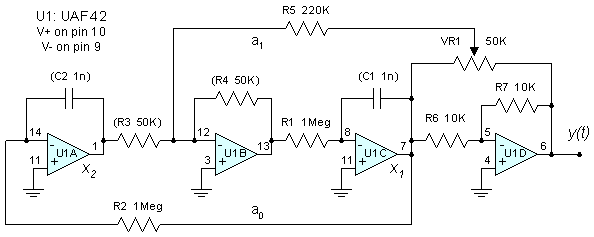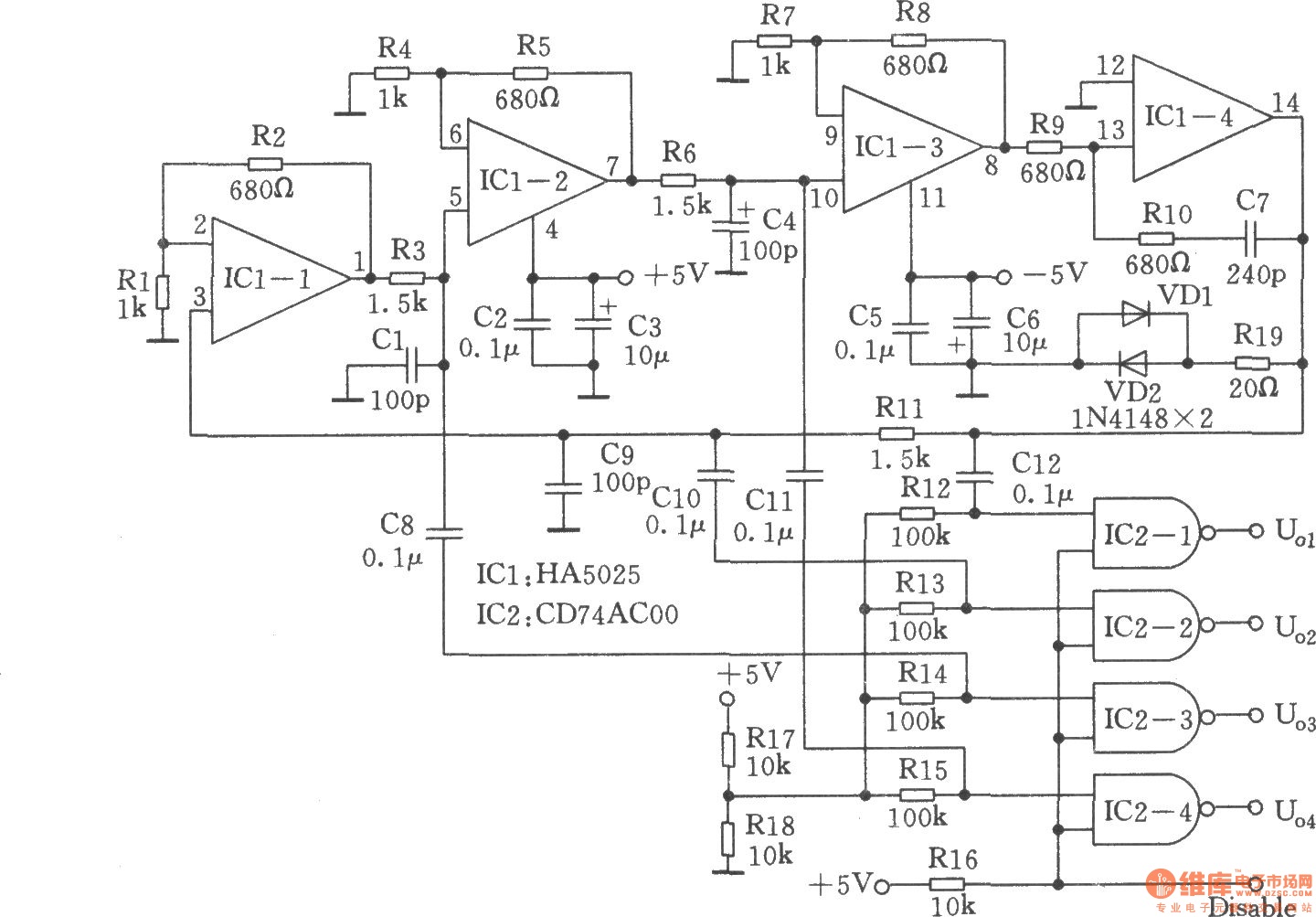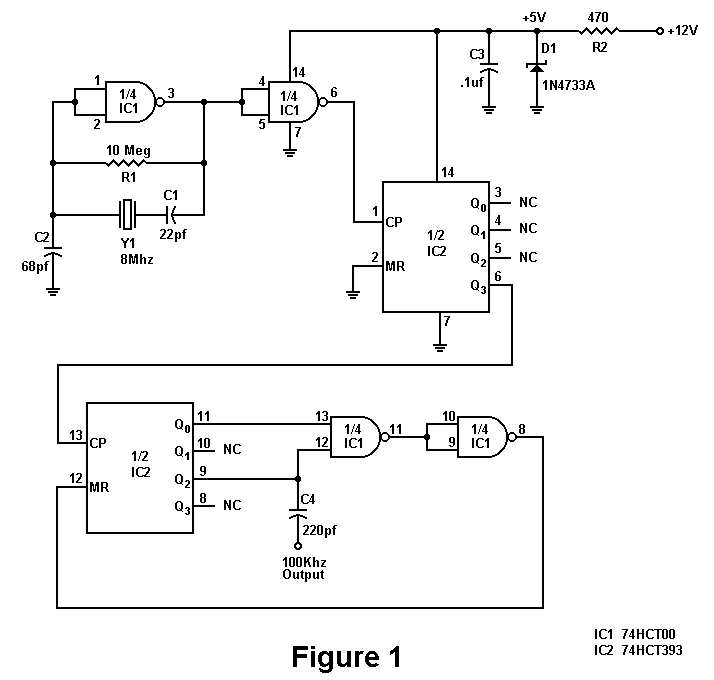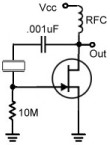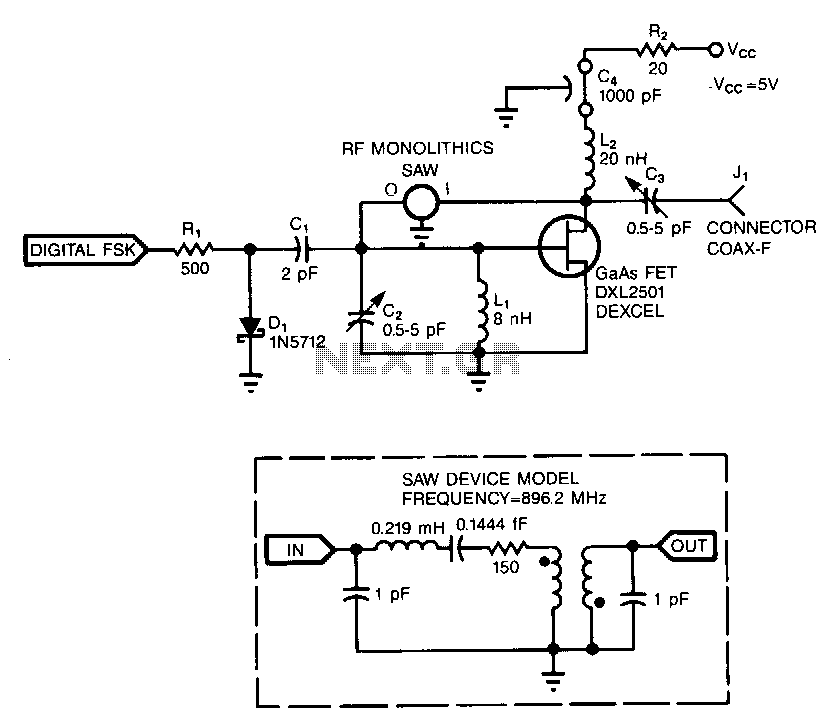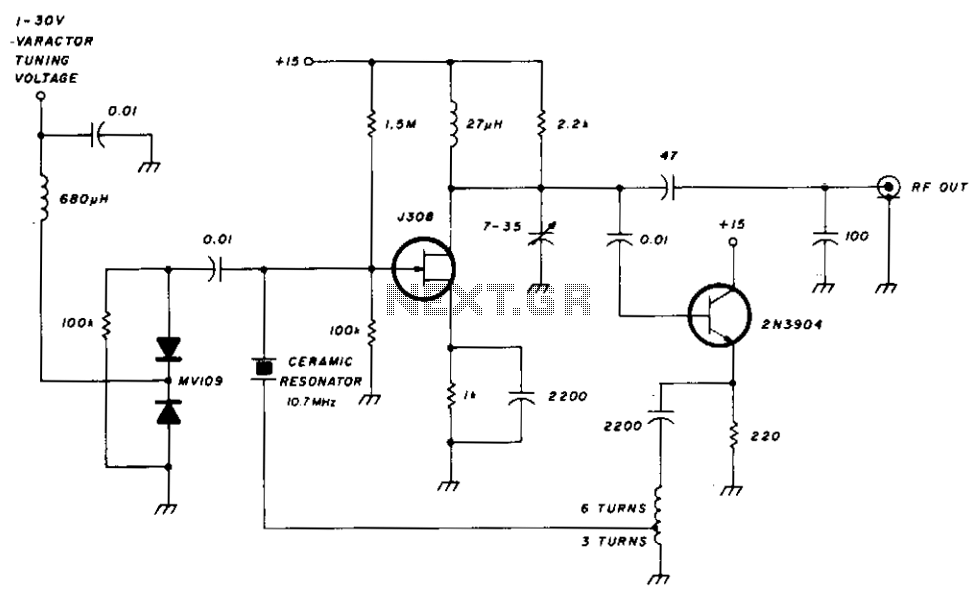
Safe Oscillator For Watch Crystals
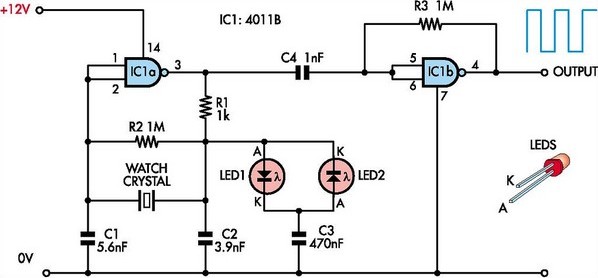
This circuit was designed to enable the use of watch crystals in an existing CMOS oscillator circuit powered by a 12V supply. The challenge arises because these crystals typically operate at a maximum supply voltage of approximately 6V; exceeding this voltage risks damaging the crystal. The circuit addresses this issue by employing two LEDs and a 470nF capacitor (C3) to limit the drive voltage to the crystal to around 4V peak-to-peak. It may be necessary to adjust capacitors C1 and C2 to ensure reliable startup and stable oscillation with certain crystals, while maintaining the C1:C2 ratio. An additional feature is that both LEDs illuminate, providing a visual confirmation that the oscillator is functioning. The relatively high capacitance values for C1 and C2 will load the crystal, resulting in the oscillator operating at a frequency lower than the crystal's nominal frequency of 32.768 kHz.
The circuit in question is a CMOS oscillator that integrates a watch crystal, typically used in timekeeping applications, into a higher voltage system. The primary function of the circuit is to ensure that the crystal operates within its safe voltage limits while still being part of a 12V powered system.
The inclusion of two LEDs serves a dual purpose: they not only provide an indication of the oscillator's operational status but also contribute to the voltage regulation needed for the crystal. When the circuit is powered, the LEDs will light up, confirming that the oscillator is active and functioning as intended. The use of a 470nF capacitor (C3) is critical in this design, as it acts as a voltage limiter, preventing the crystal from experiencing excessive voltage that could lead to failure.
Capacitors C1 and C2 are also integral to the circuit's performance. Their values must be selected carefully to ensure that the oscillator starts reliably and maintains stable oscillation. Adjustments to these capacitors may be necessary depending on the specific characteristics of the crystal used. However, it is essential to keep the ratio between C1 and C2 consistent to maintain the desired oscillation frequency and stability.
The loading effect of the higher capacitance values for C1 and C2 will cause the oscillator to operate at a frequency lower than the crystal's specified frequency of 32.768 kHz. This is an important consideration for applications requiring precise timing, as it may affect the overall performance of the circuit in timekeeping functions. Proper design and component selection are crucial to achieving the desired operational characteristics while ensuring the longevity and reliability of the crystal within the circuit.This circuit was developed to allow watch crystals to be used in an existing CMOS oscillator circuit that was to run from a 12V supply. The problem is that these crystals only work up to a supply voltage of about 6V. Any more than that and the crystal will be over-driven, causing it to shatter. This circuit solves the problem by using LEDs 1 & 2 a nd a 470nF capacitor (C3) to limit the drive to the crystal to about 4V peak-to-peak. Note that it may be necessary to adjust C1 & C2 to ensure reliable start-up and stable oscillation with some crystals. However, the C1:C2 ratio should be maintained. As a bonus, the two LEDs both glow, giving a visual indication that the oscillator is working. The relatively high values used here for capacitors C1 & C2 will load the crystal, which means that the oscillator will run at less than the nominal crystal frequency (32.
768kHz). 🔗 External reference
The circuit in question is a CMOS oscillator that integrates a watch crystal, typically used in timekeeping applications, into a higher voltage system. The primary function of the circuit is to ensure that the crystal operates within its safe voltage limits while still being part of a 12V powered system.
The inclusion of two LEDs serves a dual purpose: they not only provide an indication of the oscillator's operational status but also contribute to the voltage regulation needed for the crystal. When the circuit is powered, the LEDs will light up, confirming that the oscillator is active and functioning as intended. The use of a 470nF capacitor (C3) is critical in this design, as it acts as a voltage limiter, preventing the crystal from experiencing excessive voltage that could lead to failure.
Capacitors C1 and C2 are also integral to the circuit's performance. Their values must be selected carefully to ensure that the oscillator starts reliably and maintains stable oscillation. Adjustments to these capacitors may be necessary depending on the specific characteristics of the crystal used. However, it is essential to keep the ratio between C1 and C2 consistent to maintain the desired oscillation frequency and stability.
The loading effect of the higher capacitance values for C1 and C2 will cause the oscillator to operate at a frequency lower than the crystal's specified frequency of 32.768 kHz. This is an important consideration for applications requiring precise timing, as it may affect the overall performance of the circuit in timekeeping functions. Proper design and component selection are crucial to achieving the desired operational characteristics while ensuring the longevity and reliability of the crystal within the circuit.This circuit was developed to allow watch crystals to be used in an existing CMOS oscillator circuit that was to run from a 12V supply. The problem is that these crystals only work up to a supply voltage of about 6V. Any more than that and the crystal will be over-driven, causing it to shatter. This circuit solves the problem by using LEDs 1 & 2 a nd a 470nF capacitor (C3) to limit the drive to the crystal to about 4V peak-to-peak. Note that it may be necessary to adjust C1 & C2 to ensure reliable start-up and stable oscillation with some crystals. However, the C1:C2 ratio should be maintained. As a bonus, the two LEDs both glow, giving a visual indication that the oscillator is working. The relatively high values used here for capacitors C1 & C2 will load the crystal, which means that the oscillator will run at less than the nominal crystal frequency (32.
768kHz). 🔗 External reference
